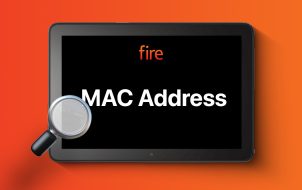Like any other Android device, Amazon’s tablets let you download and run many mobile apps. Since the devices use a version of Android specially developed for Amazon, you have to rely on their Amazon Appstore as the source.
Sometimes, you may experience slight syncing issues with your Kindle Fire tablets. For example, you choose to install an app, and it doesn’t download. Or maybe the app was successfully downloaded, but it doesn’t appear on your device. Other times, apps won’t sync or update, even if you’ve set them to do so. This article discusses solutions to app download problems on Kindle Fire tablets.
Kindle Fire: Preparation Steps to Solve Download Issues
Before you proceed with the troubleshooting app download issues, you’ll need to perform a few checks first.
- Your Kindle Fire may be out of storage space, so it can’t receive any new content. Clean it up by deleting all the content that you’ve already consumed and don’t use anymore.
- Make sure that your Fire tablet gets connected to a Wi-Fi network. If not, you won’t be able to access Amazon Appstore. That would prevent you from purchasing or downloading any content. Also, the apps on your device won’t sync or update.
- Check if you have Whispersync enabled. This service allows you to sync content between your Amazon account and your Fire Kindle. That’s especially important if you have numerous e-books and audiobook content. To check if the service works, follow these few steps:
- Open Manage Your Content and Devices in a browser.
- Click Preferences.
- Click Device Synchronization (Whispersync Settings).
- Check if Whispersync Device Synchronization is set to ON.
- Enable syncing on your Fire tablet by swiping down from the top of the screen and tapping Sync. This step allows your device to get the necessary updates and download the content for your apps. Keep in mind that if there are any large files that you need to download, it may take them some time to finish.
- Verify if your payment settings are correct. If not, you won’t be able to purchase any new content. This scenario also disables syncing of the other content, preventing it from opening.
- Open Manage Your Content and Devices in a browser.
- Click Preferences.
- Click Digital Payment Settings.
- Click Edit Payment Method to check your 1-Click payment settings. Update them if necessary.

Troubleshooting the Download Issues
One of the previous checks may have solved your problem with the app downloads. If none of the above proved helpful, there are a few more things to try.
- Manually deliver the content from your Amazon account to your device.
- Open Manage Your Content and Devices in a browser.
- Click the Content tab.
- Select the content you’d like to deliver to your Kindle Fire.
- Click the Deliver button above the content list.
- The Deliver pop-up menu will open.
- Select your Fire tablet from the Devices Selected drop-down menu.
- Click the Deliver button to sync the content with your tablet.

- Make sure that your Kindle Fire supports the content you’d like to get.
- There might be some apps that are incompatible work with your device. To check the compatibility, find the app on Amazon Appstore and read the Details page.
- When you want to switch between reading and listening to an e-book, Amazon’s “Whispersync for Voice” service will help you do so. If switching to the audio version causes you to experience issues, the title probably does not feature an audio version.
- If you didn’t correctly set up your payment options before purchasing, you might need to repurchase your content. This way, you’ll push the transaction to get processed. Of course, you’ll only be charged once, based on the actual successful payment.
- As a last resort, you might want to restart your device. Press and hold the Power button until your Kindle Fire shuts down. This process will take around 40 seconds. Once it does, release the Power button. If your tablet shuts down entirely without restarting, turn it on by pressing the Power button.
Successful Troubleshooting
At least one of the mentioned actions will certainly solve your problem with the apps that won’t download. Amazon’s online services help organize and monitor all the content that’s available in your library. If you need to remove something from your Kindle Fire, don’t worry, it’s safely stored online.
Disclaimer: Some pages on this site may include an affiliate link. This does not effect our editorial in any way.







